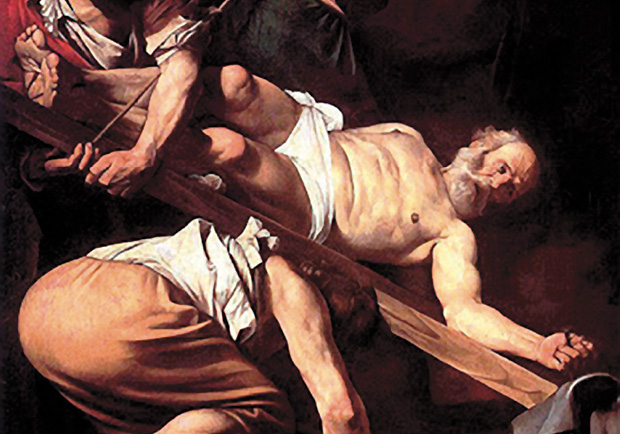In January 1996, I joined 60 Catholic, Protestant, and Jewish leaders at a conference sponsored by Freedom House. The purpose of the meeting? To spotlight the persecution of Christians around the world and to call religious leaders to advocate for these believers' rights to practice their religion freely.
The Myth of Persecution: How Early Christians Invented a Story of Martyrdom
HarperCollins
320 pages
$38.82
After several horrifying reports, moderator Charles Colson called for our comments. One response sticks in my memory. "We must remember," opined the prominent leader, "that we Christians in America are persecuted as well."
Colson cut him off: There was no moral equivalence between the marginalization of U.S. Christians by secularized institutions and the torture, imprisonment, and executions faced by Christian minorities elsewhere. Chuck was right—and would still be right today.
The early martyrs talked about battles, warfare, and victory, but all of their "combat language" was spiritualized as they peaceably emulated Jesus' sacrifice. That's not always the case today. New Year's Day 2011, a car bomb killed about 20 worshipers at a Christian church in Alexandria, Egypt. Despite Christian leaders' pleas that the violence should stop with these deaths, local Christians ransacked a mosque, burning its holy books.
Notre Dame University professor Candida Moss uses that anecdote to introduce her new book, The Myth of Persecution: How Early Christians Invented a Story of Martyrdom (HarperOne). She believes that the "violent" response of Christians sprang from seeing themselves as a persecuted minority, a perspective that she believes grew out of a flawed understanding of church history. Moss wants to undermine the martyrdom "mythology" that feeds this sense of persecution. But she goes beyond the pale when she writes, "The rhetoric of persecution legitimates and condones retributive violence."
The martyr tradition does nothing of the sort. This is why Egyptian Christian leaders argued against a violent response. The authentic martyr tradition emulates Jesus, who remained silent, "like a sheep that before its shearers is dumb" (Isa. 53:7, RSV).
Moss's book has both pluses and minuses: She corrects the muddled picture of the age of martyrs that hangs on the walls of popular Christian imagination. Persecution was not a constant threat for the church between Jesus and Constantine. There were times when authorities demanded that Christians conform to pagan ways, but these were sporadic and many times not focused solely on Christians.
On the other hand, Moss gives little credit to the oral traditions behind the martyr stories. Surely we can strip away some pious embroidery without employing a steely skepticism that reduces our certainty to the bare fact that some people were executed.
Moss rightly points out the ancient tradition of the noble death and shows how Christians' willingness to die was part of that larger picture.
Unfortunately, she defines martyrdom and persecution so narrowly that few instances fit. (My dictionary offers much more generous definitions than her book.) She thus casts the deaths of many Christian martyrs as prosecution rather than persecution—that is, they were punished for violating laws, rather than singled out for their beliefs. But in reality, Christians' loyalties to their heavenly King often threaten the powers that be. And it is not at all unusual for persecution to take the form of prosecution.
Christians' loyalties to their heavenly King often threaten the powers that be. And it is not at all unusual for persecution to take the form of prosecution.
Moss worries that when Christians see themselves as part of the martyr tradition, they turn combative. But that same belief may more frequently lead Christians to accommodate evil, as did many Christians who thought the slave trade too entrenched to overthrow. We must learn to resist evil without demonizing or polarizing.
Michael Glen Bell and Duane W. H. Arnold's new song collection, The Project: Martyrs Prayers (themartyrsproject.com), finds this balance. They have posted two sample videos on YouTube—artfully filmed and musically sensitive vehicles for the prayers of two martyred archbishops, 20th-century Salvadoran Óscar Romero and 12th-century Englishman Thomas Becket.
Candida Moss's logic would say these two were not killed because for what they believed. Instead, they were the victims of power struggles. But surely it was their Christian faith that made them stand up for the church, the truth, and (in Romero's case) the poor. Because of their faith in Christ, they used their ecclesiastical power to resist the abusive power of the state. Each believed he was sacrificing his life for Jesus.
Moss may define martyrdom too narrowly, but she is right to spotlight two outstanding leaders from the age of martyrs, who show best how to respond to persecution. Justin and Tertullian argued for truth, using "the rhetoric and ideals of the Roman Empire to make their case that Christians should be tolerated," she writes. "Perhaps if we are to appeal to the history of persecution in the early church, this should be our model."











